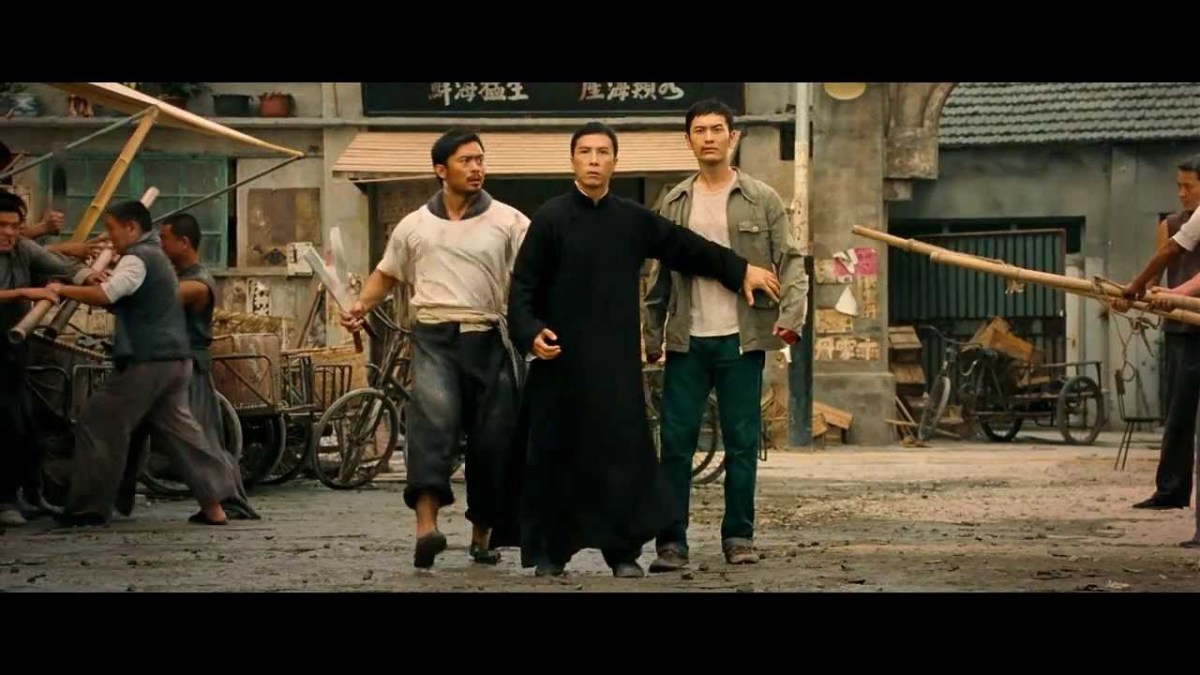

To this story, Master Yip’s explanation was that the axis within the barrel was already a bit loose, and it was no thicker than a toothpick. It hit the ground and had everyone at the scene utterly shocked. He then gave it a strong shove and the barrel actually broke under his force. Seeing the danger in front of him, Yip lunged forward and grabbed hold of the pistol. The officer took out a pistol and pointed it at Yip Man, all the while attempting to shoot him. It was said that the master, in the prime of his hot-headed youth, had an argument with a military officer while attending a Piaose event (“Parade of Children’s Float”). Many residents back then were well aware of the tale. Master Yip was not willing to boast about his past, which frankly was a lost on our part.įrom what I had heard, however, Master Yip is known for two major acts back in the city of Foshan. To satisfy our readers’ curiosity, I asked Master Yip to speak of his heroic acts back in the day, but was curtly refused. He spoke with a clear, strong voice, and was not at all boastful. When talking to Master Yip Man, it was clear that he acted nothing like his age.

Leung Ting, an instructor who hosts Wing Chun classes in various schools such as Baptist College, Zhuhai College and Chinese Baptist Student centre is one of the last of his closed-door students. Master Yip has stopped taking on new students years ago. Few residents of Hong Kong knew of Wing Chun back then after twenty-three years of hard work, the result of Yip Man’s work is now visible. He started practicing Chinese martial arts at thirteen years of age, and moved to Hong Kong from Mainland China in 1949. Chan operated his martial arts school for thirty-two years, but only taught sixteen disciples Yip Man was the last of his students. His star disciple, Chan Wa Shun (whose nickname was “Loose change Wa”), eventually became the Master of Master Yip Man himself. We all now familiar with the fact that Leung Zan rose to fame in the city of Foshan (in the province of Guangdong, China). Wong Wa Bo, one of Leung’s student and who worked in a performance troop, then taught the art to Leung Yi Tai. When it was Leung’s turn to teach his disciples, since the art itself was yet to be named, Leung named it in memory of his wife and aptly called it Wing Chun. Her name was Yim Wing Chun, and she then taught what she had learned to her husband, Leung Bac Chou. Wu Mei passed on her skills to yet another woman, whose name gave birth to this particular school of martial arts. This stemmed from the fact that the founder is a woman, whose stamina is no match if she opposes a man in a fight if she is not able to take down him down right at the start of the match, it will be impossible for her to continue on.Īlong that same tangent, the first rule of Wing Chun is therefore focused on aggression and speed one must be able to inflict harm on an enemy at the wave of a hand, so that the enemy will know that he must retreat. Contrary to such popular belief, however, Wing Chun is actually much more aggressive than other martial arts styles. If Wing Chun was founded by a woman, surely the style will be notably smoother and more subdued.

Looking back, this story takes us back some two hundred years. One of the most notable characters in the story is the monk Zhi Sin the nun Ng Mui trained under the same master as Zhi Sin, and she was actually proclaimed as the founder of Wing Chun. Those who are avid readers of martial arts novels are surely familiar with the story of “ Fong Sai Yuk” challenges the defender of the ring”. The 76-year-old is still in his physical prime he is sharp, energetic, and offered a response to every single one of my questions. To introduce the art of Wing Chun, I have conducted a special interview with Master Yip Man. Surely there’s ample reason behind the popularity of the sport and the diligence of many of his students. Over a mere 23 years, the aging Master Yip Man has made Wing Chun hugely popular in Hong Kong, and has recruited many enthusiasts under his wing. That is what Wing Chun is all about- using simple, practical moves to defeat enemies. You will also learn about the standards used in Chi Sao (“sticking hands”), and the secret behind defeating enemies using the shortest path and the fastest of speed. However, if you manage to have someone who cares to explain to you the essence of Wing Chun, it is highly likely that within 5 minutes, you’ll learn about the unique way in which a Wing Chun practitioner pushes enemies back. If you are a beginner when it comes to fighting, that concept itself for you is likely no more than throwing a punch here or giving off a kick there.


 0 kommentar(er)
0 kommentar(er)
